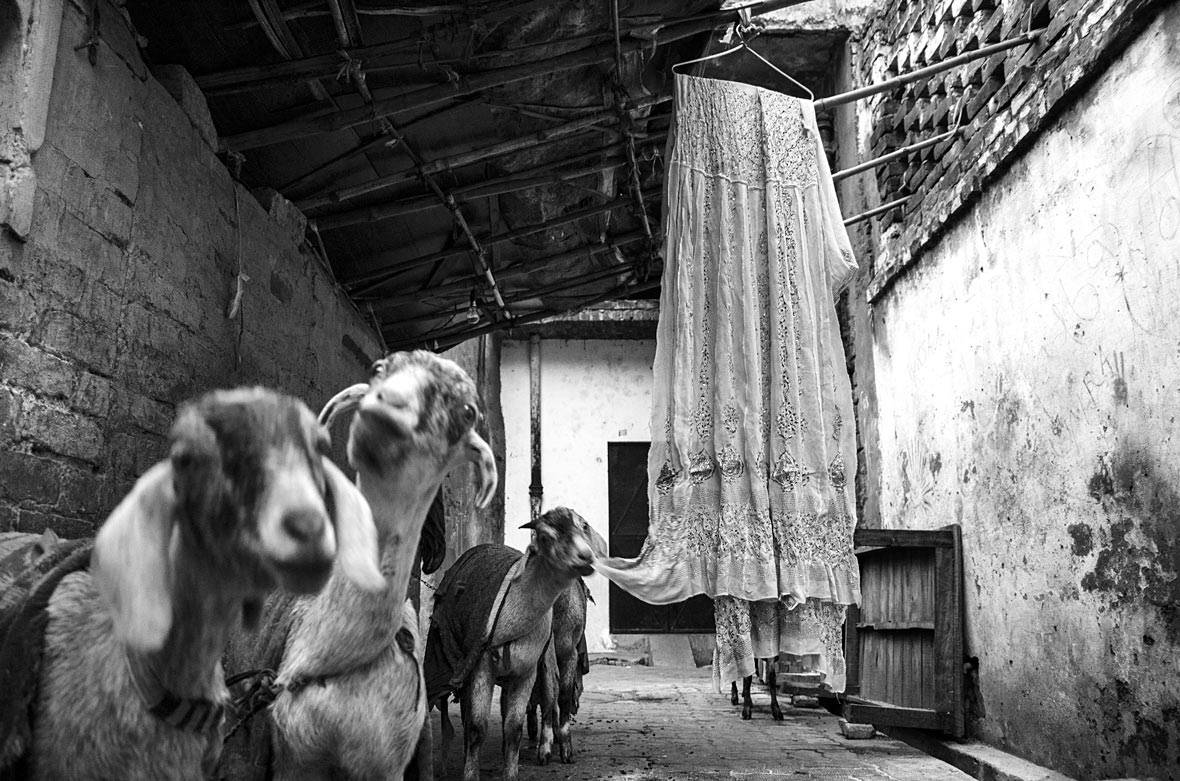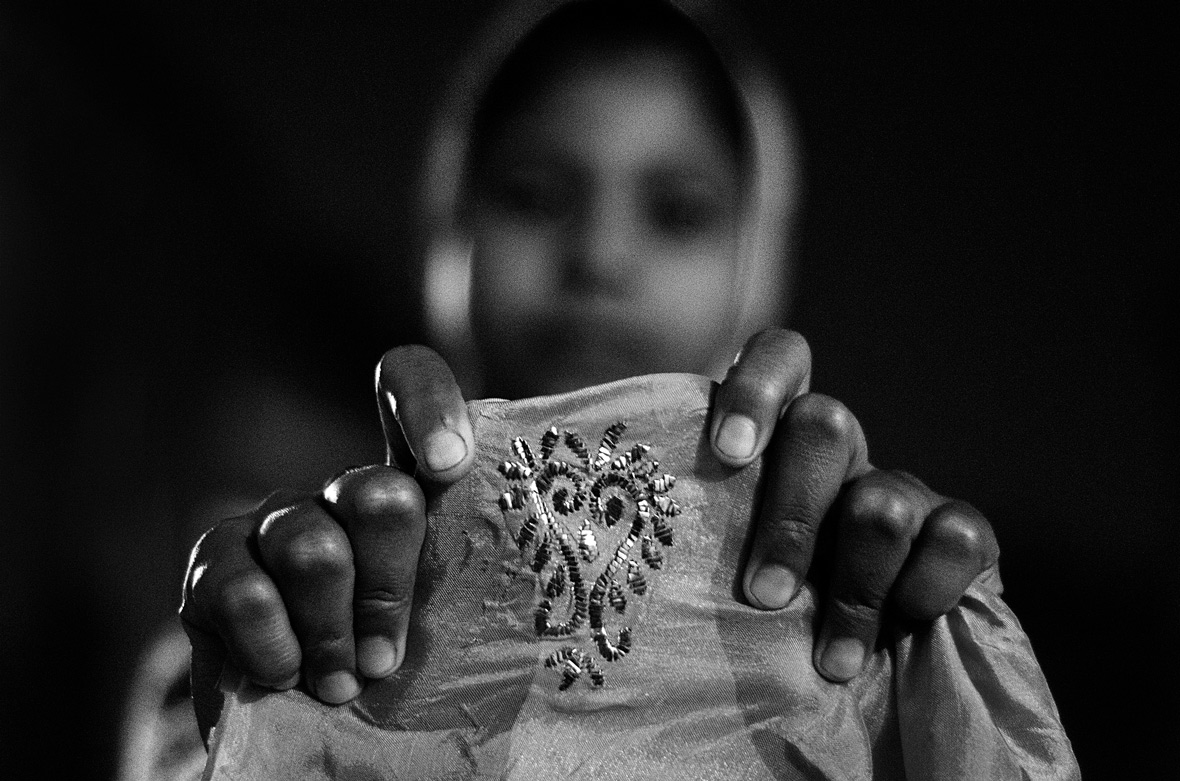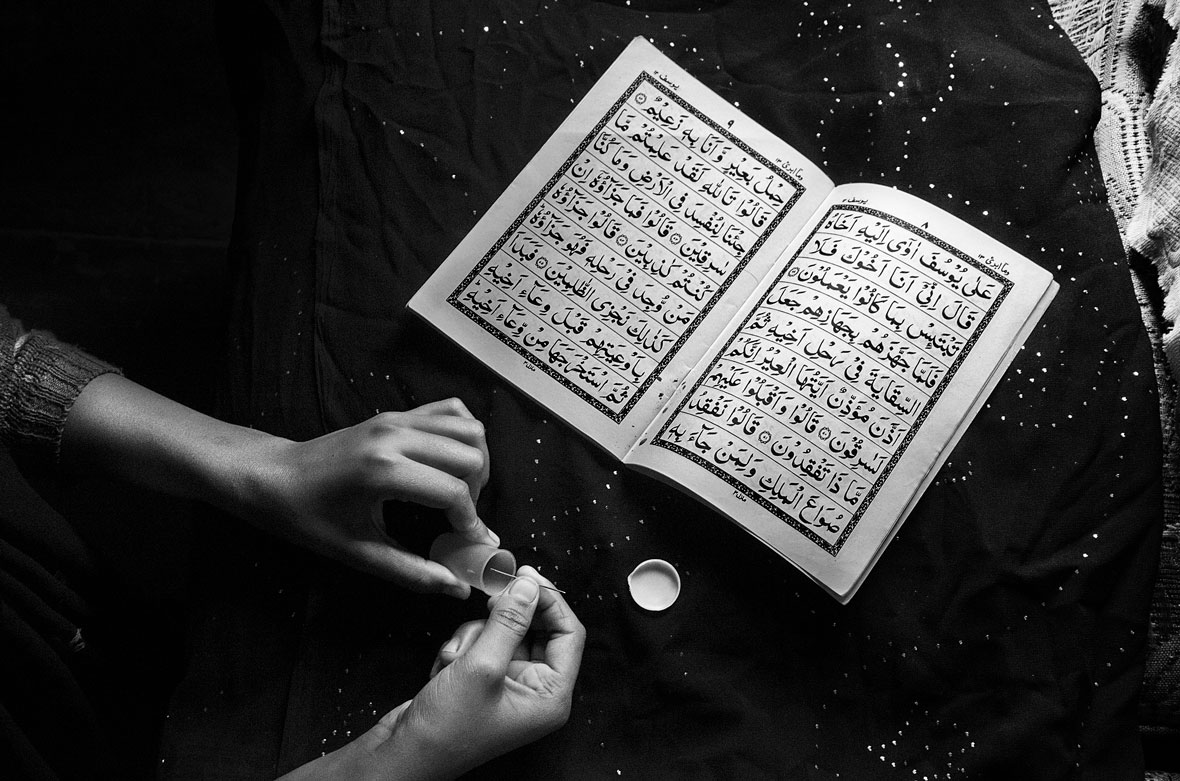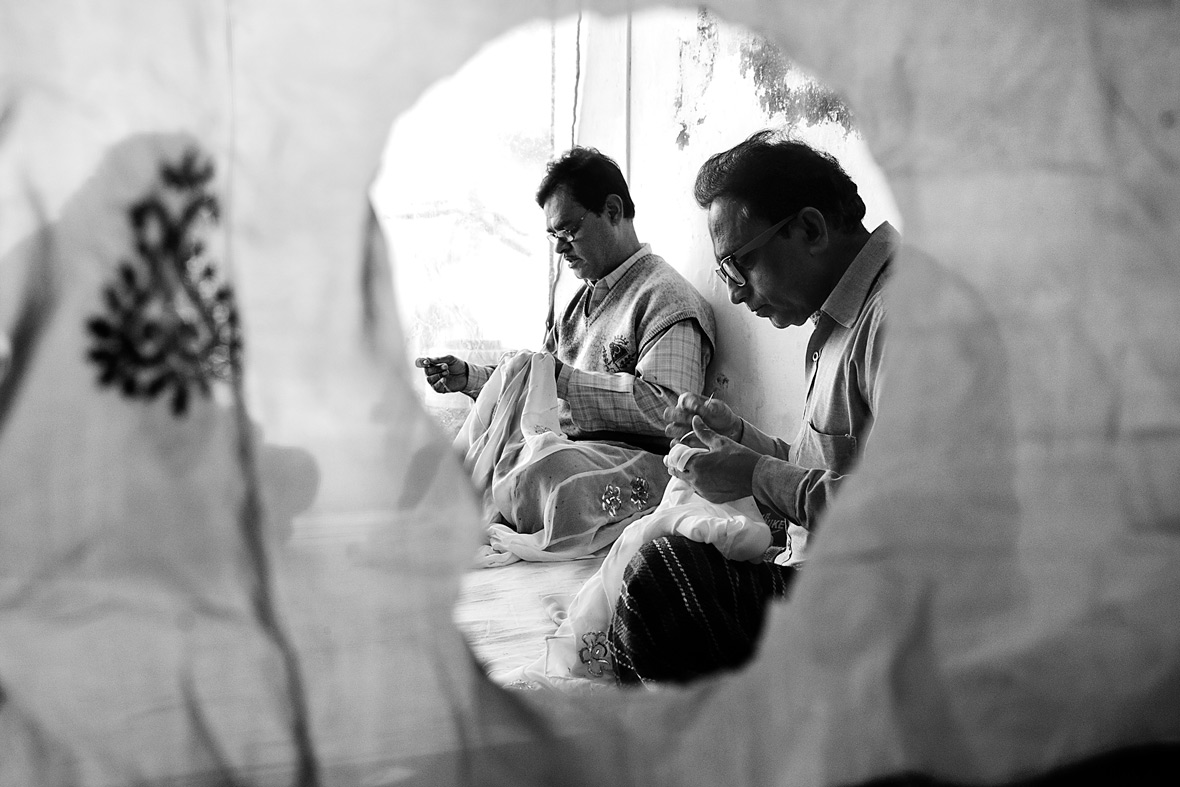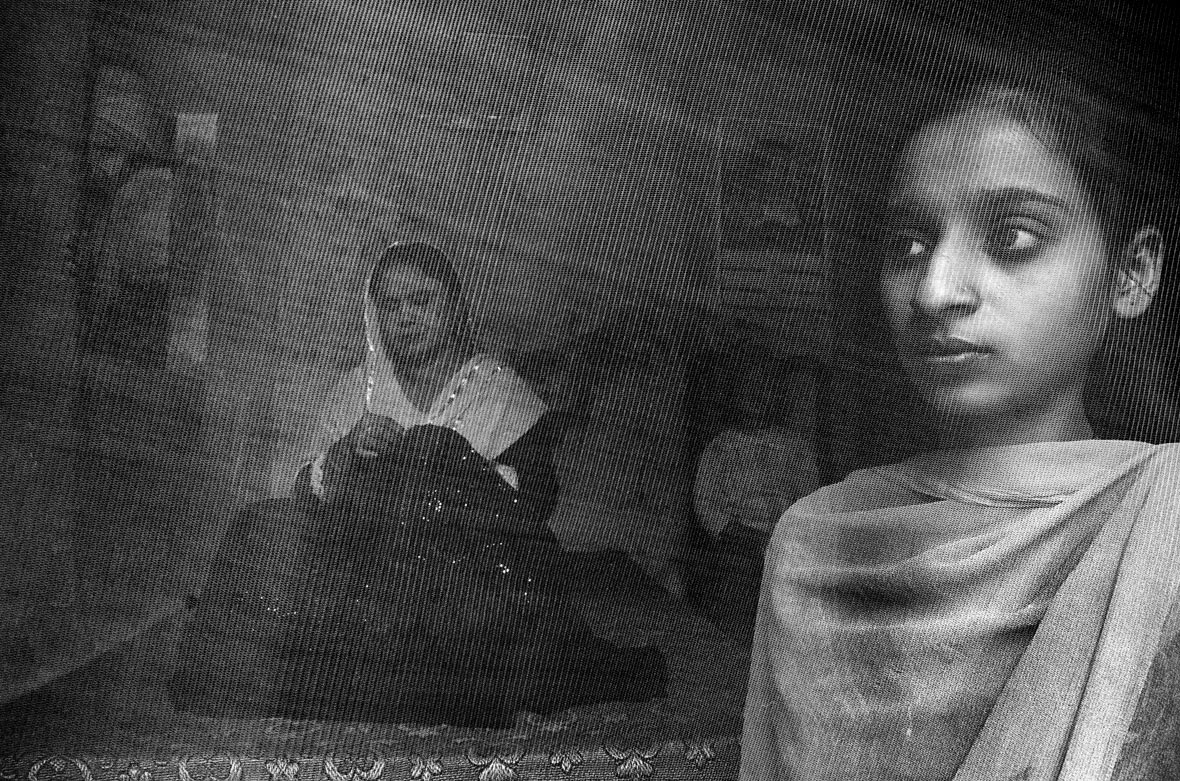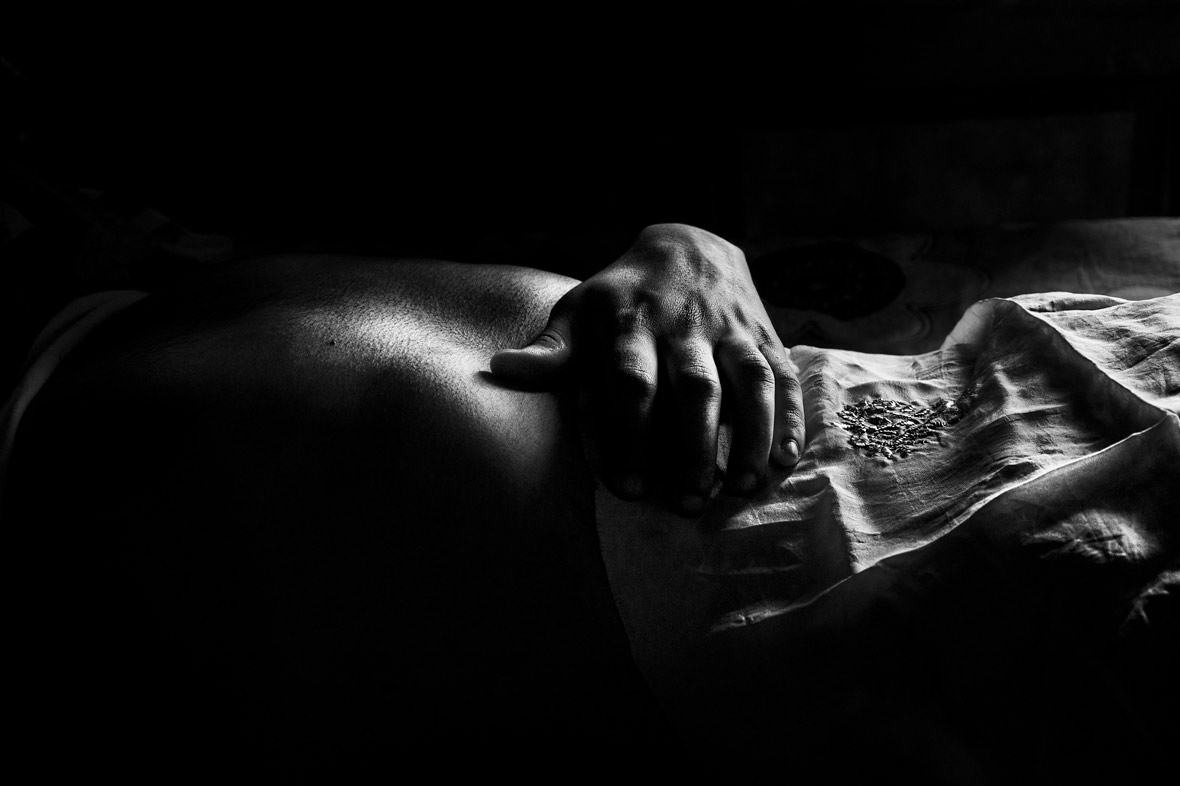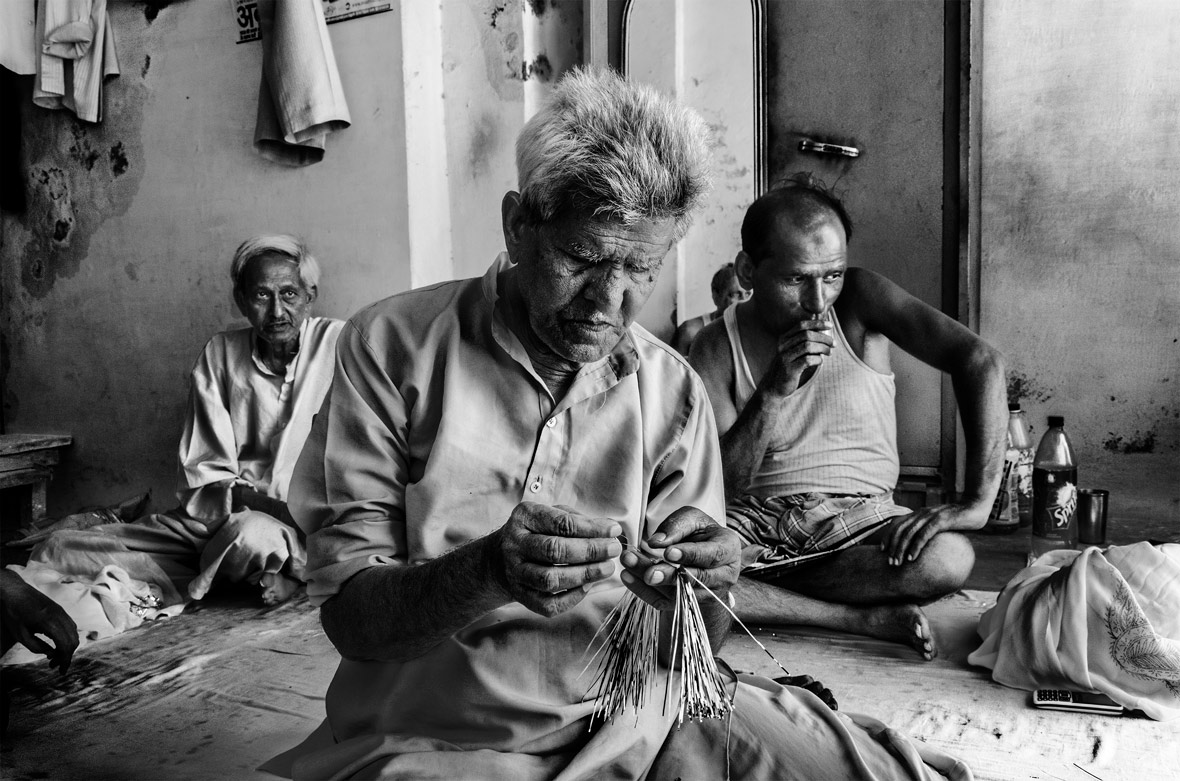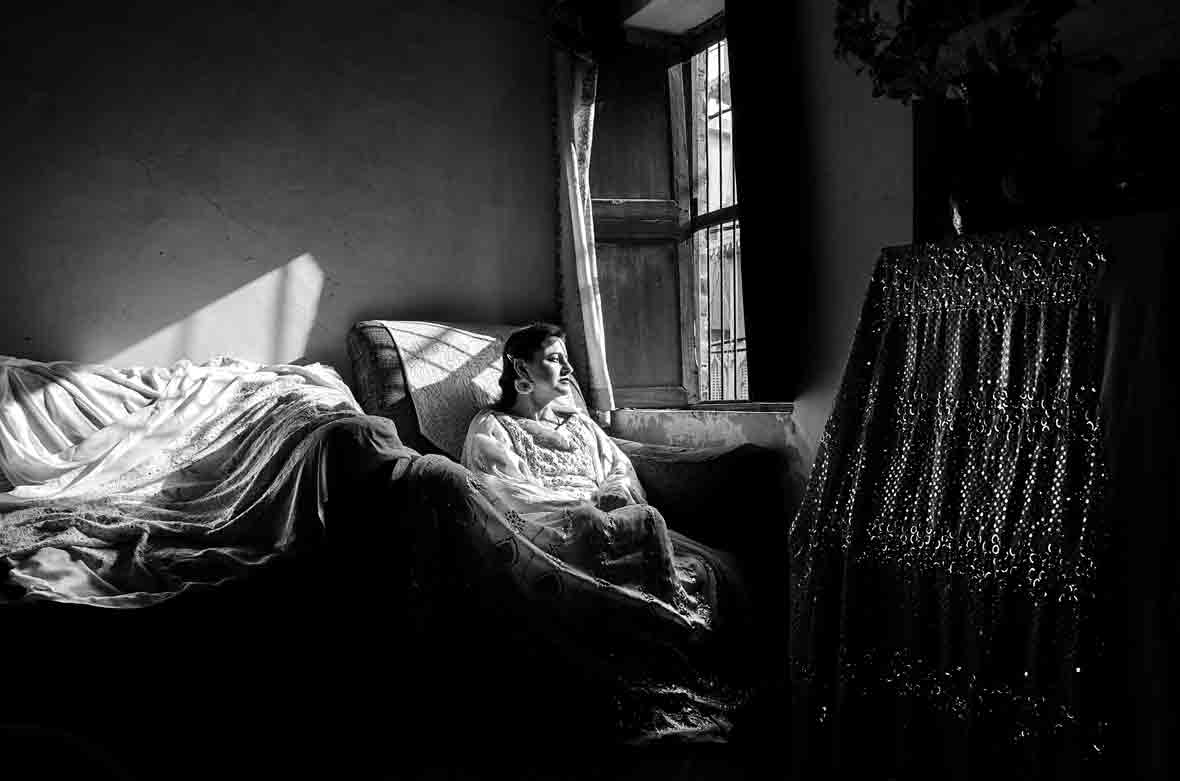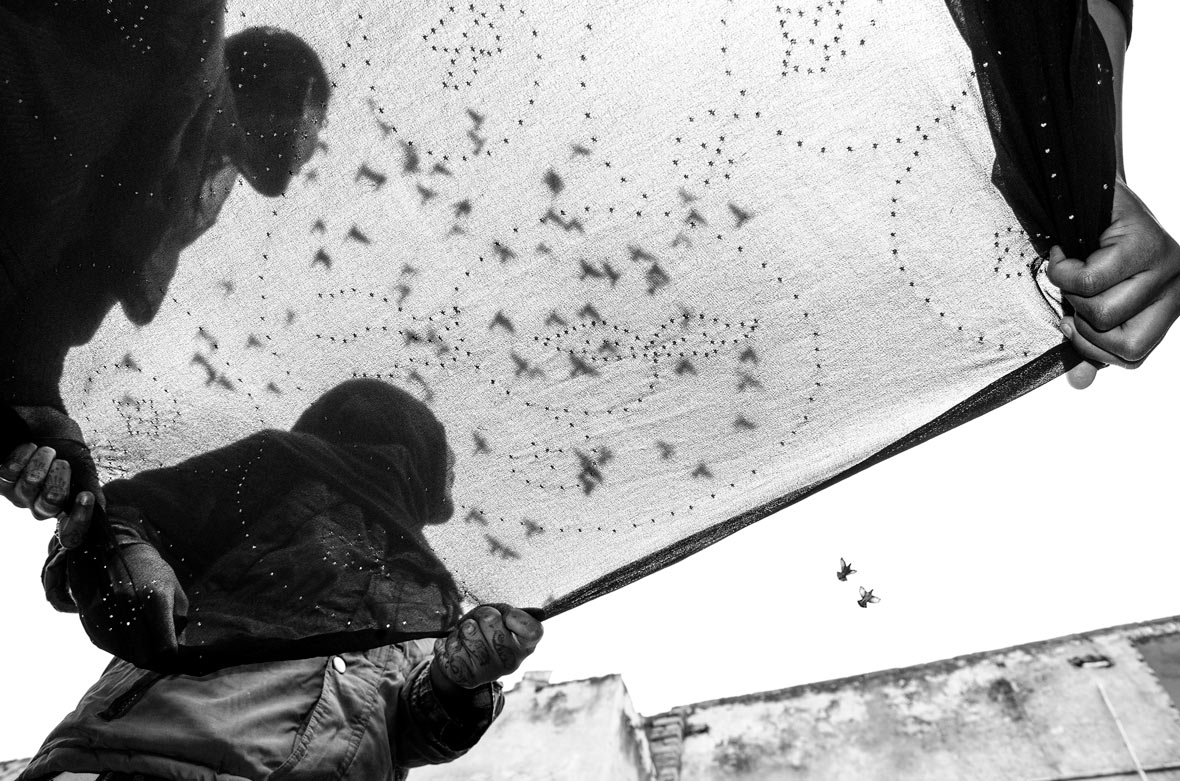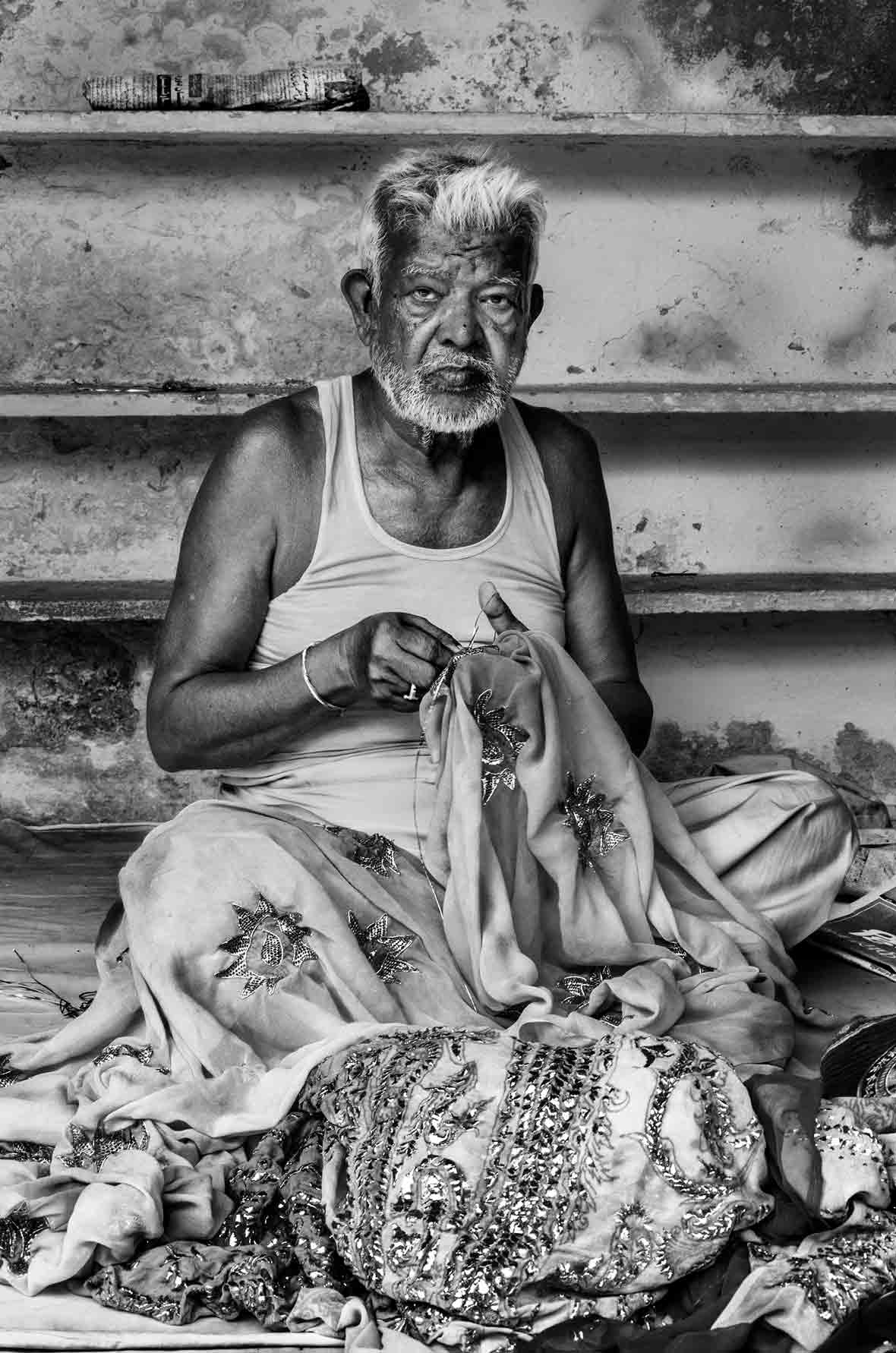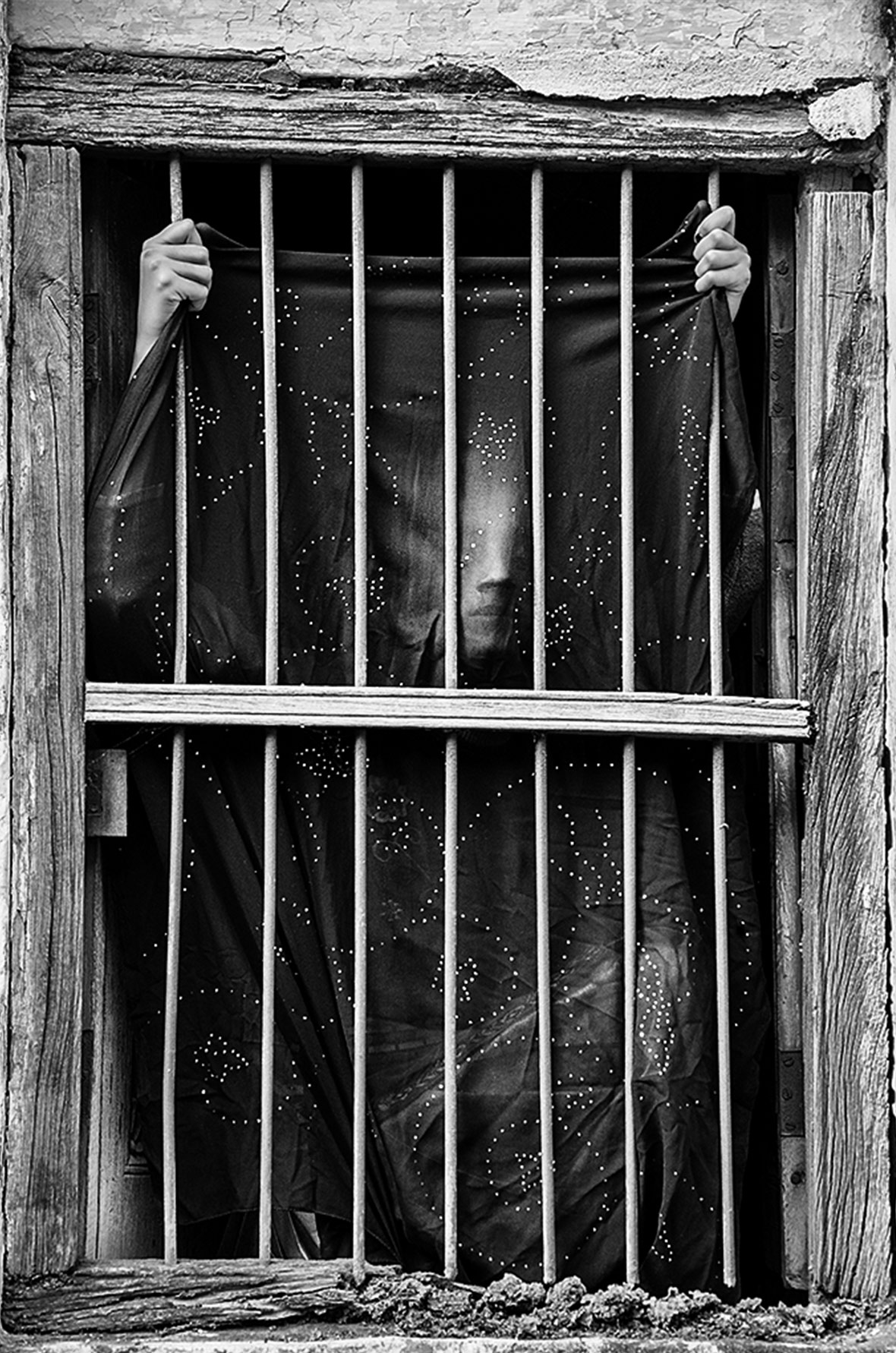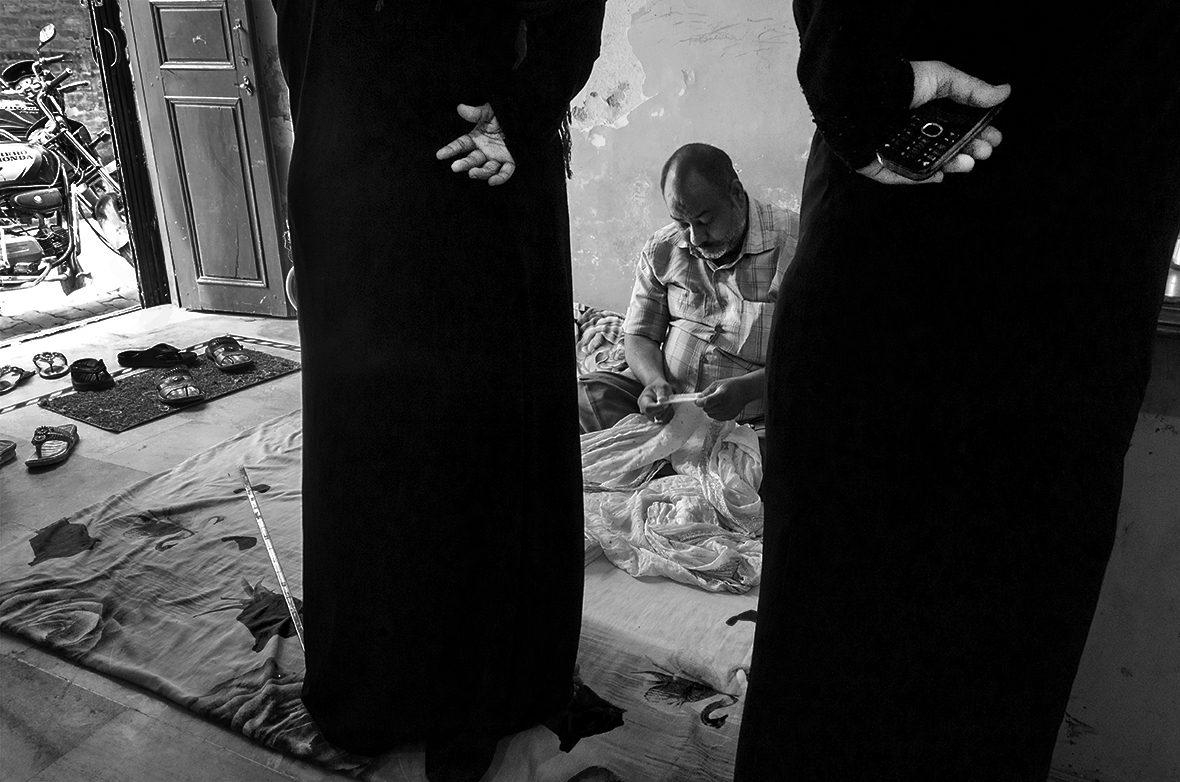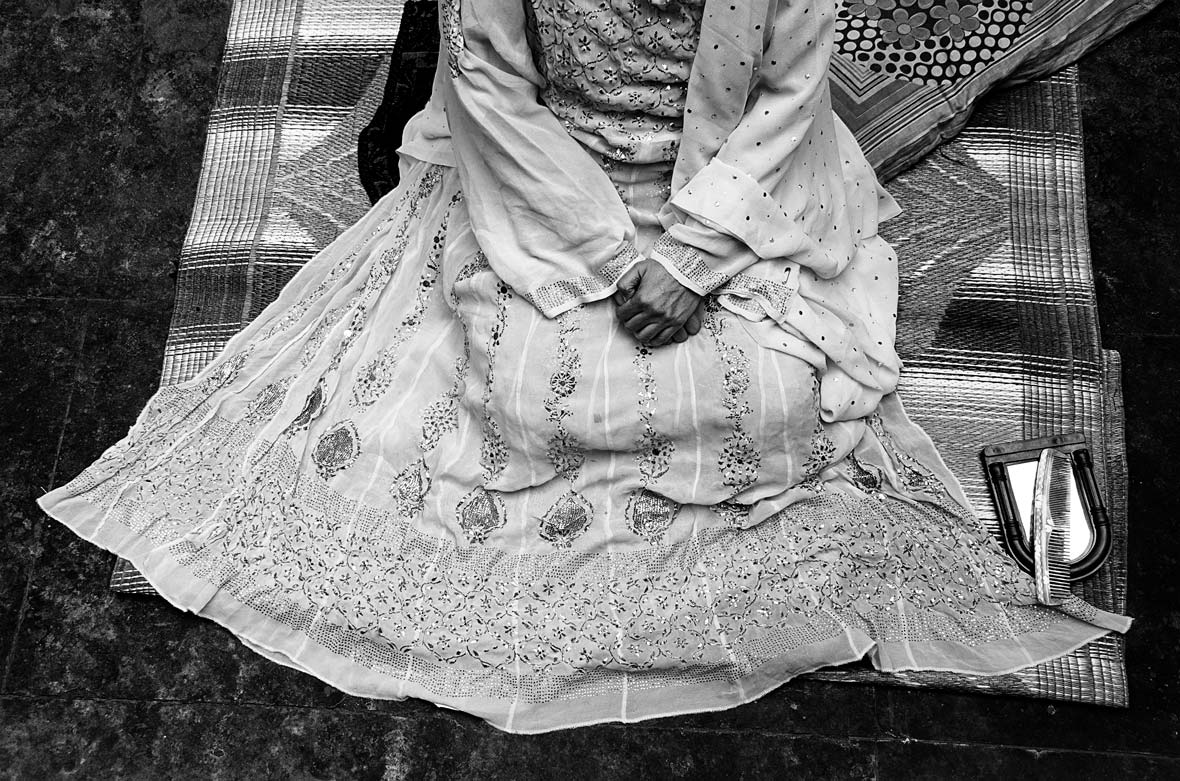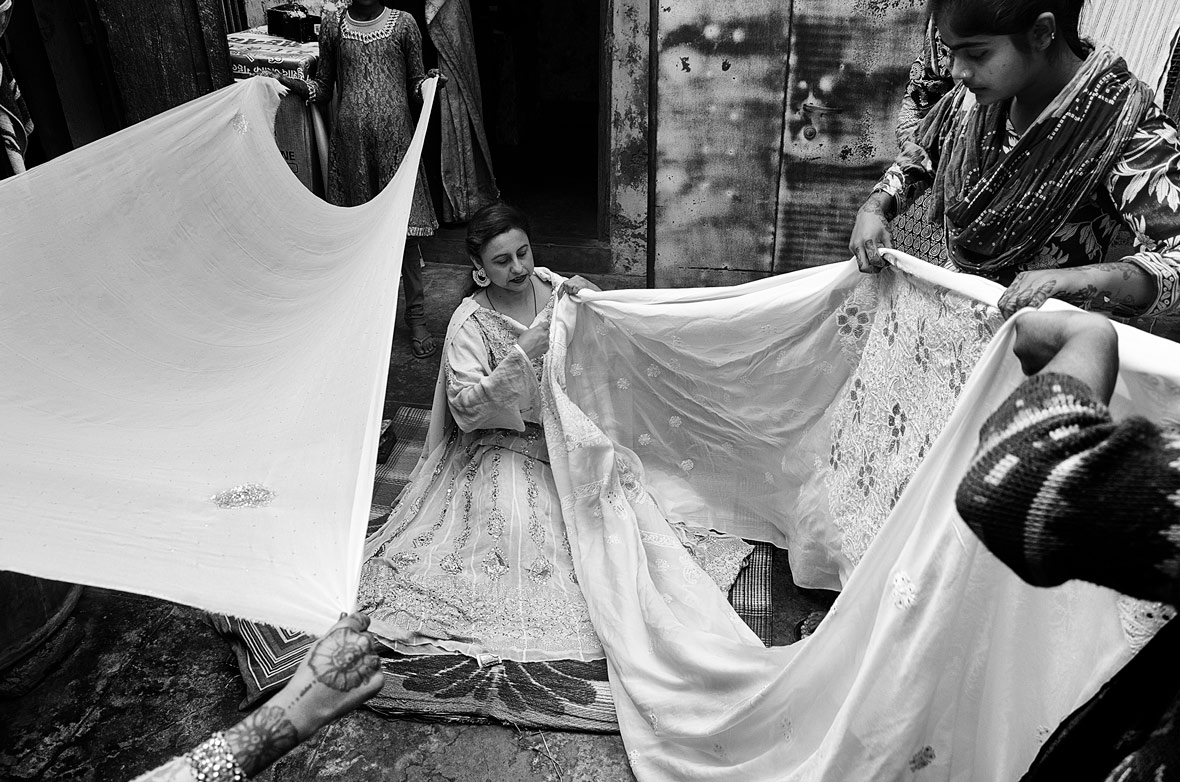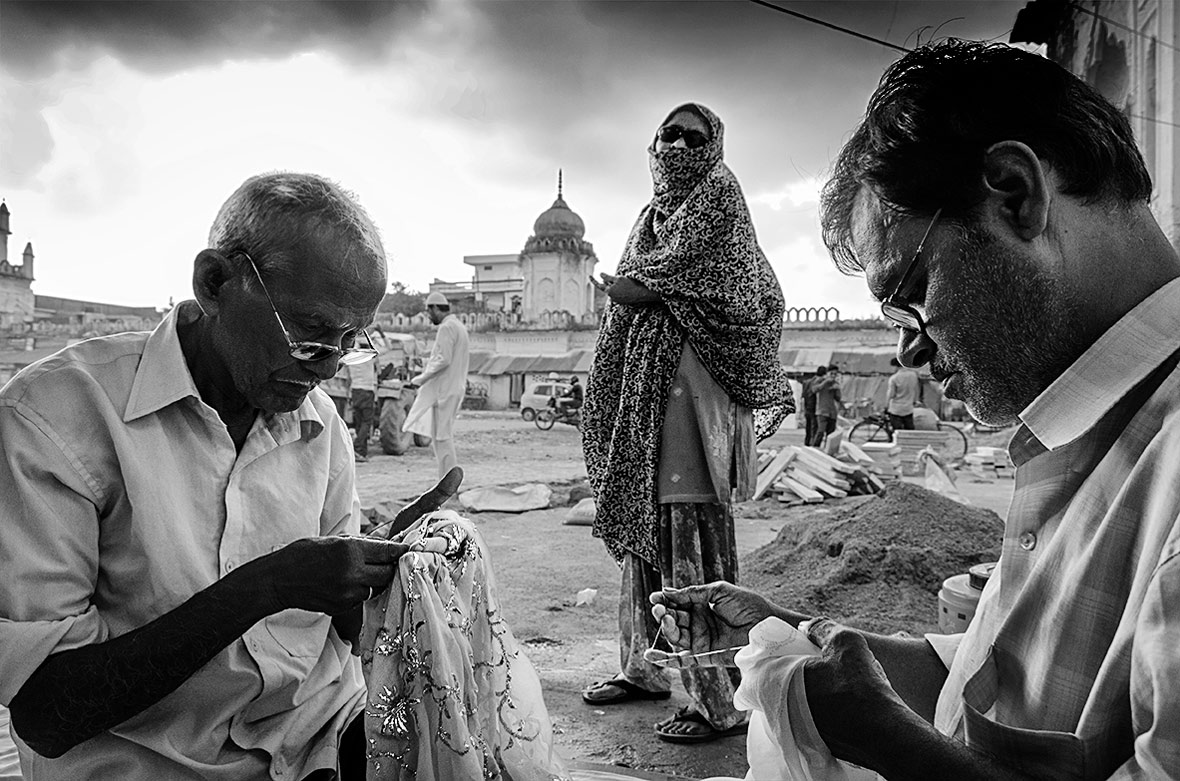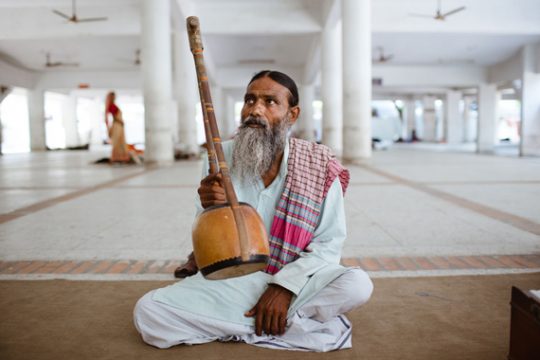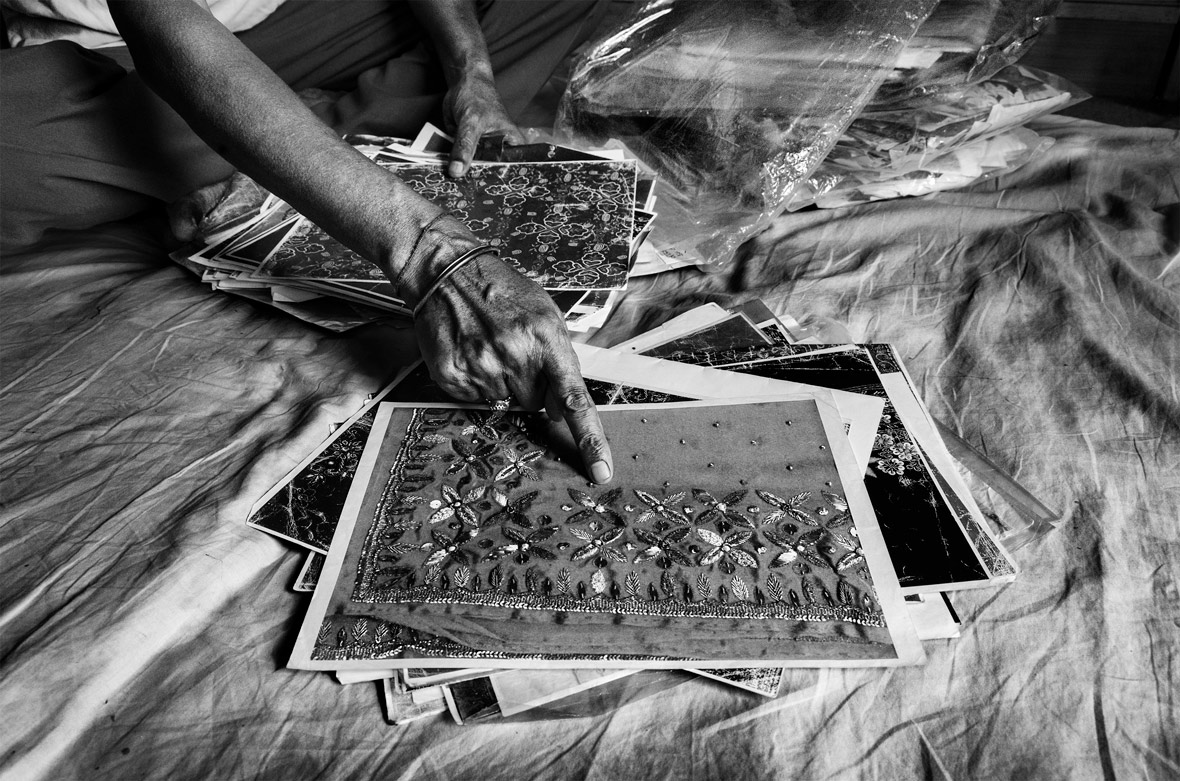
The city of Lucknow has historical roots of being a cradle of art and literature in India. Inspired by the cultural backstory of his hometown, documentary photographer Taha Ahmad sought to celebrate the city’s rich heritage. This led to Swan Song of the Badlas, a photo series that documents the plight of local artisans who are attempting to preserve a dying tradition.
纪录片摄影师塔哈·艾哈迈德(Taha Ahmad)的家乡勒克瑙(Lucknow)是印度的艺术和文学中心。深受当地文化传统的启发,Ahmad试图探索其丰富的历史根源。他的摄影作品系列《Swan Song of the Badlas》赞颂了勒克瑙的文化遗产,并展示了努力传承即将失传的传统文化的人们所面临的困境。
Swan Song of the Badlas takes a look at the disappearing art of mukaish badla, a form of embroidery that was once prosperous in Lucknow during the 18th century. This art, which involves inserting threads of gold and silver into fabric, was originally used to beautify chikankari, another form of embroidery that also originated in Lucknow but remains quite well known throughout India.
《Swan Song of the Badlas》深入展现了即将失传的Mukaish badla艺术。这是勒克瑙当地一种特色刺绣形式,在18世纪曾风靡一时。这种刺绣艺术将金线和银线编织于织物中,最初是用来美化另一种勒克瑙特色刺绣形式chikankari。Chikankari至今在印度依然颇受欢迎。
Mukaish badla, however, was much more niche. The extravagance of using precious metals as embellishment meant that only the ruling class of the city sought after it in the past. But at the craft’s peak, the number of artisans (or badlas) in town reached upwards of 3,000. Today, there are less than 25 practitioners of the craft left in Lucknow, most of whom are over the age of 65. “Their population is dwindling, and soon, in not more than 20 or 25 years, they will become a part of history that can only be recalled in a poignant daydream or through visual imagery,” Ahmad wistfully says.
然而,Mukaish badla艺术更为小众,作为一种奢华的装饰,只有当地的统治阶级才有资格拥有。因此,这种刺绣艺术未能像chikankari一样走出当地,传播到印度其它地方。但是在巅峰时期,当地会有3000多名会这种刺绣工艺的手工匠(或称badlas)。现在,在勒克瑙只有不到25名会这种刺绣工艺的手工匠,其中绝大多数都已经在65岁以上。“会这种刺绣工艺的人越来越少,可能不用20年或25年,他们就会成为历史的一部分,只存在凄凉的白日梦或视觉图像的回忆中。“Ahmad担忧地说道。
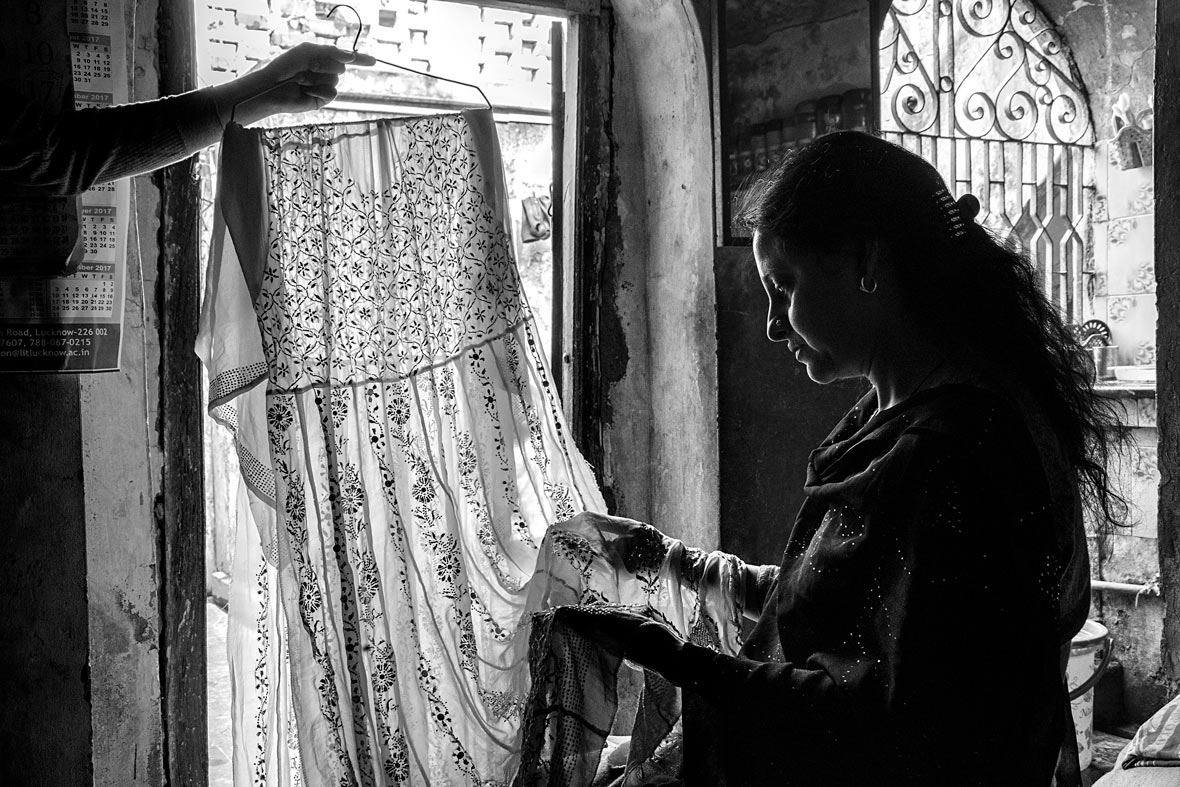
The remaining artisans, who have devoted their whole lives to the art, make an abysmal wage of anywhere between two and three U.S. dollars per day. Their work can last up to ten hours per day and everything is done in small, suffocating rooms. Ahmad’s dramatic, black-and-white photo series is an intimate vignette of these surviving craftsmen, revealing their struggles, their plights, and their resiliency in fighting to maintain an art that’s being washed out by the waves of time. Scroll down to see more photos from the series.
那些剩下的手工匠将他们的一生倾注在这种艺术中,每天却只能挣得两至三美元的微薄收入。他们每天在小得令人窒息的房间工作,有时甚至长达十个小时。Ahmad以充满戏剧性的黑白摄影作品,讲述了这些幸存的手工匠的故事,近距离展现他们的挣扎,他们的困境,以及他们在努力保护这种快要被时间浪潮卷走的艺术时所展现的韧力。一起来欣赏这个摄影系列中的其它作品吧。
